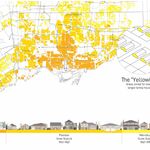Skeezix
Senior Member
Member Bio
- Joined
- Apr 25, 2007
- Messages
- 4,343
- Reaction score
- 2,688
- Location
- East of this, west of that
Nobody has made an argument on why tax rates should be based on a percentage of property value. If housing prices double in Toronto next year, are Toronto homeowners being undertaxed because the mill rate is that much lower now? If house prices fall by 90% next year, are Toronto homeowners now way overtaxed because the mill rate is sky-high?
Nobody here is saying that tax rates should be based on a percentage of property values. I don't think anyone is defending property tax as a good way to raise the overwhelming bulk of funds for an entire level of government. I think what people are saying (at least I am), is that actual dollars paid, particularly when it is based on a "representative" (ha) example of a two-storey detached home with two-car garage, is a profoundly dumb and misleading way of measuring comparative tax impacts.
And if all residential property values in Toronto double in the next year, or decrease by 90% in the same timeframe, with no corresponding changes to property values elsewhere in the GTA, then we can talk about your scenario. Meanwhile, let's not waste time on that.
Last edited:




